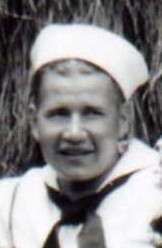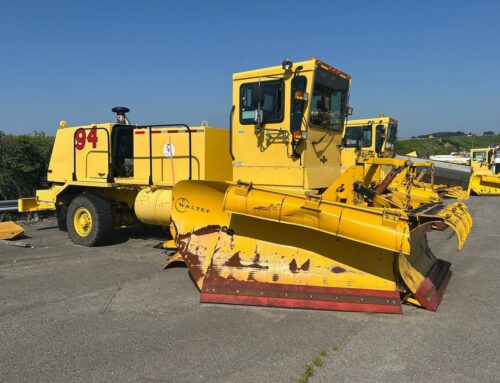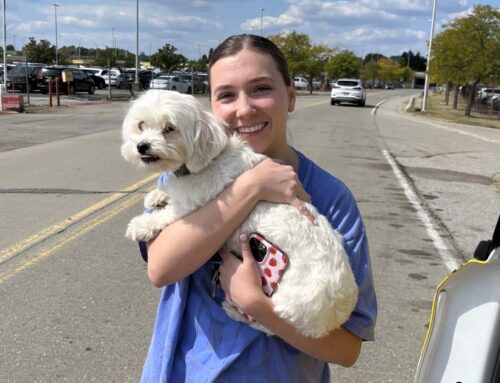Sailor Killed at Pearl Harbor Finally Comes Home
Stanislaw Drwall was aboard USS Oklahoma when Japanese forces attacked
By Bob Kerlik & Julie Bercik
Published August 9, 2021
Read Time: 4 mins
Mary Ann Ryther thought the day may never come.
Nearly 80 years after her uncle died aboard the USS Oklahoma during the Japanese attack on Pearl Harbor in World War II, she stood in the rain on the apron at Pittsburgh International Airport, watching his flag-draped casket returned home.
Ryther was 4 years old and living with her grandparents when her grandmother got the telegram informing her that her son, Navy Patternmaker 1st Class Stanislaw Drwall, was lost during the attack.

Petty Officer 1st Class Stanislaw Drwall (Courtesy of Department of Defense)
The whereabouts of his remains were unknown until they were finally identified earlier this year through DNA testing.
“When I got the call, it was a very quiet day,” Ryther said. “The person that called, the Navy officer, was very, very nice and asked me if I was related to (Drwall) and I said yes. Then he told me his remains had been identified.
“Of course, at that point, I completely lost it. I was just overwhelmed with happiness, with sadness—with everything.”
That was in March. Ryther and her husband then coordinated with the military to bring her uncle’s remains home on Wednesday and buried him in Thomas, W.Va., on Thursday—what would have been his 105th birthday.
“The reason why I’m bringing him back to this small town in West Virginia is my grandparents thought he would be brought back, and he never was,” Ryther said at the airport. “And they had a grave that they bought for him back in 1941 or ’42, and it was always empty. So as of tomorrow, there will be something in that grave.”
It wasn’t until 2010 that the military called to inform Ryther that the remains of the Oklahoma’s crew would be exhumed. They needed a sample of her DNA to see if her uncle’s remains were among those recovered.
“That’s when we started our quest to keep it alive so that all the remains of all those men who were on the Oklahoma could be returned to their families,” Ryther said. “Whether it was my uncle or anyone else’s family member. There were a lot of them.”
Drwall, 25, was the eldest son of Polish immigrants and enlisted in the Navy years before the attack. A younger brother also died in World War II. All of his siblings and parents died not knowing where Drwall’s remains were, or if they even existed.
Ryther said she talked with a man who may have been the last person to see Drwall alive.
“It was a Sunday morning. He was on his way home from church, and he was going back on the ship,” Ryther said.
An hour later, the ship was hit.
According to the Department of Defense POW/MIA Accounting Agency, on Dec. 7, 1941, Drwall was assigned to the battleship USS Oklahoma, which was moored at Ford Island, Pearl Harbor, when the ship was attacked by Japanese aircraft.
The Oklahoma sustained multiple torpedo hits, which caused it to quickly capsize. The attack on the ship resulted in the deaths of 429 crewmen, including Drwall.
From December 1941 to June 1944, Navy personnel recovered the remains of the deceased crew, which were subsequently interred in the Halawa and Nu’uanu cemeteries in Hawaii.
In September 1947, tasked with recovering and identifying fallen U.S. personnel in the Pacific Theater, members of the American Graves Registration Service (AGRS) disinterred the remains of U.S. casualties from the two cemeteries and transferred them to the Central Identification Laboratory at Schofield Barracks in Honolulu.
The laboratory staff was only able to confirm the identifications of 35 men from the Oklahoma at that time. The AGRS subsequently buried the unidentified remains in 46 plots at the National Memorial Cemetery of the Pacific (NMCP), known as the Punchbowl, also in Honolulu.
In October 1949, a military board classified those who could not be identified as non-recoverable, including Drwall. Years later, between June and November 2015, DPAA personnel exhumed the Oklahoma Unknowns from the Punchbowl for analysis.
To identify Drwall’s remains, scientists from DPAA used dental and anthropological analysis. Scientists from the Armed Forces Medical Examiner System used mitochondrial DNA and Y chromosome DNA analysis.
Drwall’s name is recorded on the Courts of the Missing at the Punchbowl, along with the others who are missing from World War II. A rosette will be placed next to his name to indicate he has been accounted for.
Ryther wants people to know about the sacrifices of U.S. servicemembers.
“I hope that they will remember how much all of these men—in all of the wars—sacrificed their lives, their limbs, their bodies—for this country,” she said.
For her family, it was a long wait to get Drwall home.
“Never give up hope,” she said. “Hope is eternal.”






